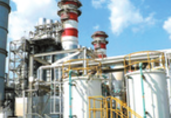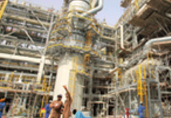Saudi Arabia has boosted oil production to near record highs, reaching levels of output and exports not seen since before the global economic crisis. According to official data issued in mid-August by the Joint Organisation Data Initiative (JODI), Saudi Arabia increased its crude oil production from 8.89m barrels per day (bpd) in May to 9.76m bpd in June, with overseas shipments averaging 7.38m bpd, the highest since October 2008.
The Middle East Energy
Displaying 751 - 756 of 761
Economic update | Saudi Arabia: Pumping up the volume
13 Oct 2011
Economic update | Kuwait: Expanding downstream
12 Oct 2011
With a recent increase in oil production and global crude prices above $100 per barrel, Kuwait is expected to run a substantial fiscal surplus in 2011 thanks to its hydrocarbons export revenues. But the country is looking beyond the market for crude oil and investing in refineries both at home and abroad.
Economic update | Kuwait: Partnership potential
2 Aug 2011
With the recent addition of a new 1400-MW power plant, Kuwait appears ready to meet the increase in electricity demand that occurs every summer. Government authorities are also planning to bring additional capacity on-line over the next few years, with the private sector expected to play a major role in this expansion.
Economic update | Jordan: Planning for the future
5 Jul 2011
Regional events are forcing Jordan to look past its traditional sources of energy, both in terms of feedstock and physical location. Disruptions in the supply of natural gas to the kingdom coupled with rising costs, mean it may look elsewhere for feedstock, while also pushing forward with its own nuclear energy programme.
Economic update | Oman: Powering up
4 Jul 2011
Oman is scaling up investments in its electricity sector in a bid to boost production to meet spiralling demand. Plans are in hand to construct new power stations across the country and diversify sources of supply, though it will take some years before the Sultanate will have a comfortable cushion of excess generation capacity.
Economic update | Qatar: Gas-fired growth
1 Apr 2011
Thanks in large part to the number of hydrocarbons expansion projects that have taken place over the past few years, Qatar is expected to see sustained economic growth for the foreseeable future. According to an economic bulletin released by Saudi Arabia’s Samba Financial Group in late March, the country could see GDP growth in excess of 19% by the end of 2011. Similarly, nominal GDP is forecast to grow by 22.4%, from $122.3bn at the end of 2010 to $149.7bn by the end of 2011. These gains can be attributed primarily to the country’s rapidly expanding energy sector, which saw growth of nearly 36% in the third quarter of 2010, due to increased production and rising oil prices.





